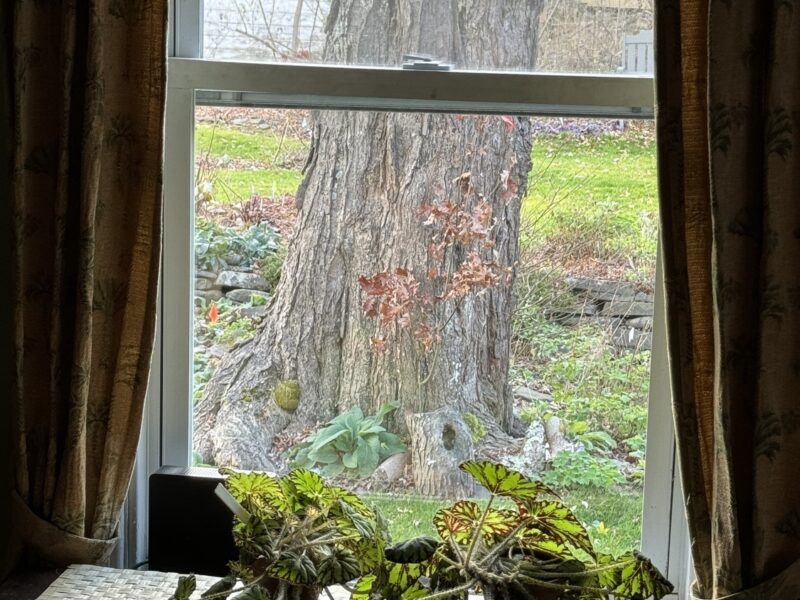

This week in Houseplants 101 I’ll try to describe the different types of houseplant buyers, and we’ll try to see where you fit in and why. Then we’ll move on to the basics of buying these plants and what you need to know.
First and foremost, I don’t believe anyone has a black thumb. If you kill each and every plant you buy it’s simply because you don’t pay attention. Houseplants need basics like light, water and some degree of warmth. If you don’t pay attention to these three basics your plants are doomed, and that’s your fault. It has nothing to do with the color of your thumb — it’s simply your thought process. You’ll find help below.
If you want these plants to succeed you should know the plants’ needs before you bring them home and not once you get them home. If all you have is north-facing light you’ll quickly lose that wonderful jade plant. Conversely, if you buy a prayer plant and stick it in a south-facing window where the sun beats down on it for five hours every day that prayer plant will last a couple of weeks then the leaves will begin to burn, crisp and die a slow death one leaf at a time.
Read the label that comes with the plant. That will give you your initial clues.
If it doesn’t have a label or tag that gives you the light and watering needs of the plant and you’re not able to look it up in a book or have the experience, don’t buy it. Unless it’s really cheap and small.
If you’re new to houseplants don’t start with a 6-foot-tall Dracaena, Ficus or palm. Start with smaller, inexpensive plants that are available in pots from 2 inches in diameter to maybe 4 inches. Let these plants be your teachers, your laboratory, and when you have them mastered then repot them (also a learning experience). Then move up to larger plants that can adorn an entire room and not just a tabletop.
Now, why are you buying these plants? Yes, larger houseplants have been shown to have the ability to filter and clean the air in your home. No, they are not air purifiers as such but they can improve indoor air quality to a degree. Again, why are you buying these plants?
My initial collection began to take shape in my bedroom at my parents’ house. My mother always had a few plants in the living room, and some performed spectacularly while others had short and troubled lives. She was convinced she had a black thumb. She didn’t. She just never took the time to learn about the plants.
As a result the Dieffenbachia in the living room got taller and taller until it just fell over. It was the wrong place and overpotted, and — as these “cane plants” do — it got tall, leggy, and top heavy. But she also had a Hoya, which is a succulent. It thrived on her neglect. It got watered from time to time but was mostly allowed to be dry. As a succulent, it loved this. It was just to the side of a bright south window but the sun never really hit it. Perfect for this particular plant.
The Hoya grew long spindly stems that could have been supported on stakes so they’d grow upright but she just let them hang down and over the plant stand. Had she watered it incessantly it would have rotted. It was a plant that wanted to be ignored and just given a little water from time to time. It was an accidental success and in a wonderful but unusual display it flowered with incredible blooms every year.
So, why do you, yes you, want plants in your house? Some can be colorful and add a softness to the room. Others can make a room feel like you’re outside in tropical paradise in the dead of winter. Others may offer blooms and scents that are simply magnificent. Or, if you’re like me, you are a die-hard gardener and when things stop happening outdoors you can do your gardening indoors.
Others will begin to collect plants and establish collections. This can be great fun, be incredibly rewarding and keep you occupied for hours depending on how much time you have to spend with and on them. I know people who have developed remarkable begonia collections, orchid collections, cacti collections that eventually led to special rooms and even greenhouses for these plants.
I found houseplants to be simply addictive. I was always looking for more and different plants. My older sister had moved out of the house and her room was twice the size of mine and brighter. I took over her room, and my collection of plants in 4-inch pots was on two sheets of 4-by-8 plywood atop sawhorses. There must have been well over 200 plants. I added some artificial lighting as that too became a craze with fluorescent “grow tubes.”
I met two local women who wanted to open a plant store, but they knew little about the business so we collaborated. We ended up with one store in Great Neck and a second store in Roslyn. I was in houseplant heaven.
I sold houseplants all through college, and when I graduated, I moved to Southampton. A year later some local friends turned me on to a greenhouse that had been abandoned on what was then Southampton College. It was a 20-foot-wide, 60-foot-long glasshouse but in great disrepair. With the help of these friends we rebuilt the greenhouse, and within a year we began filling it up with tropical plants, hundreds and hundreds of them. I had found heaven.
So with that cautionary tale behind us, why don’t you buy houseplants? What’s holding you back? The plants you can fit in a small place will amaze you. They do, however, get bigger. The plants you can fit in a larger space will amaze you even more.
So now that you know you’re not a black thumb, what should be your first consideration when you buy these plants? Remember the vast majority of them have tropical forest origins. And while the tropics may elicit thoughts of sunny beaches and palm trees, most of our houseplants have origins under the canopy of larger plants, though a few others are in full tropical sunlight. That means your very first consideration before you buy that plant is: Do I have the right light?
Be aware of the available light in your home. It can be your living room, bedroom, kitchen or sunroom, but you need to know the quantity and quality of light that’s available. You should also be aware that the lighting will change with the seasons. There is less light in the winter as the sun lowers in the sky. However, the leaves on the trees outside that shade your house in the summer will be gone, and that may mean that a particular window is brighter in the winter than in the summer. Certainly a consideration.
If you take a look at the chart that’s with this week’s column you’ll see that I’ve divided light into four categories: Low light, medium light, good light and direct light. Each of these categories gives more detail on where these light situations can be found with relation to the distance to the light source and where you locate the plant. Match this to your plant’s needs (read the tag) and you’ll be off to a good start.
The range on the table is based on a 3-foot-wide by 5-foot-tall window. If the window is larger then there will be more light available. An obstructed window is one from which about half the light is blocked by trees, buildings, curtains or other obstructions as seen from where the plant might be placed. The ratings are also based on the top of the plant being at least a foot below the top of the window. The distances are measured from the center of the plant. Remember, this is a guide and not a rule.
Know what lighting situations you have at home. Match the plant to those situations. If you buy plants hoping they’ll just “make it” then some will and most won’t. That’s not being a black thumb; it’s just being naive.
The worst thing you can do is to mindlessly move your plants around. Try to keep them in the same or a very similar light situation. Also keep in mind that if you just leave the plant alone it will naturally grow toward the light. To avoid this tendency to “lean” you should get into the habit of giving each plant a quarter turn every week to balance the light exposure. Stick to one regime and stay with it for all the plants. Make your turns either clockwise or counterclockwise.
Next week, a houseplant break so I can make some suggestions for gardening holiday gifts. In the meantime, check your lighting then maybe venture out to look at plants in nurseries and garden shops. See what works for your situation(s). And of course, keep growing.
 More Posts from Andrew Messinger
More Posts from Andrew Messinger